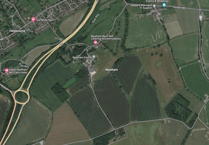A LEGAL challenge against Waverley Borough Council’s decision to adopt a Local Plan with inflated housing figures imposed by a government planning inspector, has been granted leave to progress to a full judicial review this autumn.
In a permission hearing at the High Court last Thursday, Justice Lewis rejected part of three challenges by Protect Our Waverley (POW) and the Campaign to Protect Rural England (CPRE), but agreed the borough council’s decision to take 50 per cent of Woking’s ‘unmet housing need’ – an additional 83 houses each year – should be subject to a further legal review.
It means the jury is still out on Waverley’s Local Plan – the blueprint to build 11,200 houses by 2032 – and the judge also concluded that it if one of the Local Plan grounds is successful then the Dunsfold Park permission for 1,800 new homes, a cornerstone of the masterplan, could be called into question.
POW’s Dunsfold challenge will therefore also proceed to the full hearing in the autumn.
The borough council hailed Justice Lewis’ decision to reject the majority of POW and CPRE’s grounds for challenging the Local Plan– specifically dismissing claims that Waverley and the Local Plan inspector Jonathan Bore failed to consider environmental constraints in calculating Waverley’s objectively assessed need – as well as the planning permission for Dunsfold Park.
Waverley’s Tory leader Julia Potts also played down the impending judicial review as a “technical issue”, based not on the principle of attributing Woking’s unmet need to Waverley, but the lawfulness of the planning inspector’s reasoning on the issue. “Essentially Waverley is stuck between a rock and a hard place,” said Miss Potts.
“It is a government requirement to have an adopted plan. To adopt a sound Local Plan, we had to accept the inspector’s modifications, and these are now being called into question by POW and CPRE.
“And Waverley has to use tax payers’ money to defend our position in court.”
But both the CPRE and POW also welcomed the High Court decision, with CPRE Surrey branch director Andy Smith commenting that rather than a mere technical issue, as claimed by Waverley’s leader, the housing numbers were the “very crux of the matter”.
Mr Smith said: “We do not yet know if Guildford council will accept the uplifts imposed on them, but Waverley council did so, adopting the plan with the increased numbers, and that was one of the main reasons we needed to challenge them, as we knew that such an increase in the borough’s housing target would have grave consequences for the AONB and Green Belt countryside in particular.”
POW chairman Bob Lees added: “This decision vindicates POW’s two legal challenges.
“Waverley Borough Council has failed to protect Waverley from unsustainable development.
“And the Secretary of State for Housing has failed to comply with Government policy to build houses in the right place. Dunsfold Aerodrome is quite clearly not the right place.”
A separate High Court challenge launched by Milford residents Timothy and Isobel House, against the allocation of 180 houses on surplus land at Milford Golf Club that is subject to a restrictive legal covenant, has been dismissed.

.jpeg?width=209&height=140&crop=209:145,smart&quality=75)



Comments
This article has no comments yet. Be the first to leave a comment.